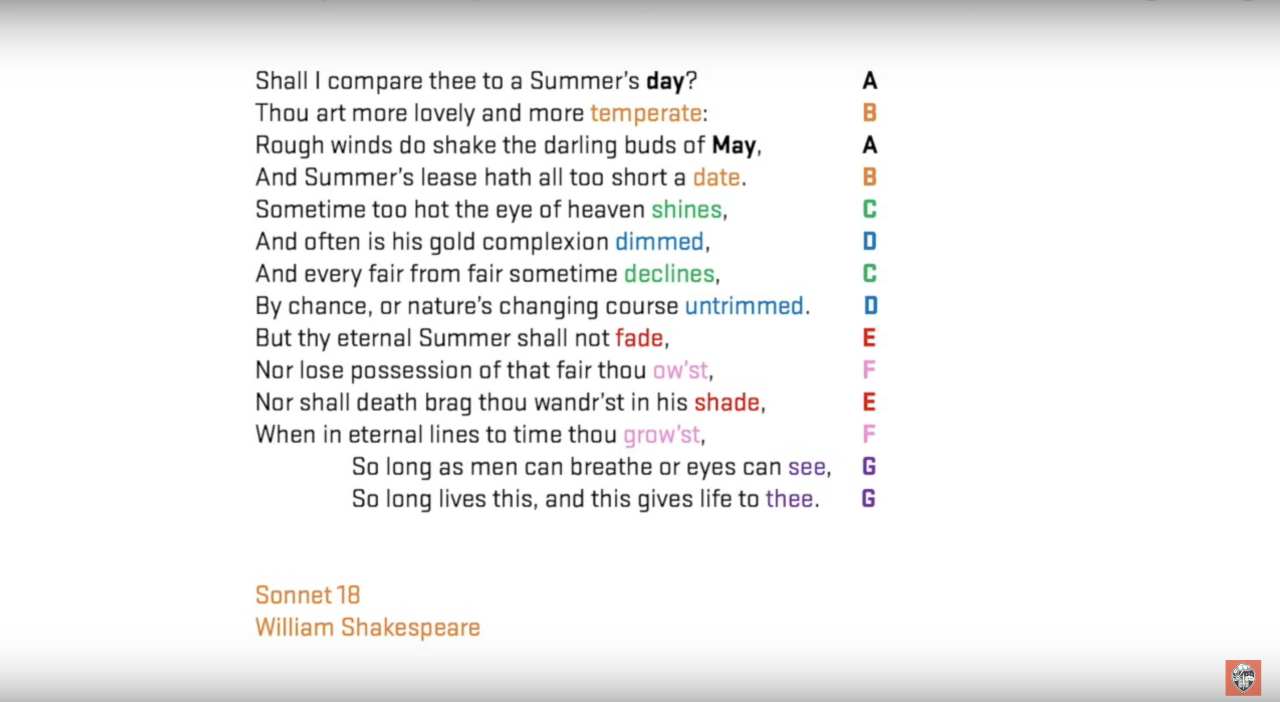

Each of the lines takes up one particular idea. Shakespeare uses the first four lines to set out his main ideas for Sonnet 1. This structure serves to break up the whole poem into easily digestible sections and makes analysis easier. The rhyme scheme is simple: ABAB, CDCD, EFEF, GH. This means ten syllables to each line, with syllables being unstressed and stressed alternatively. The final couplet (the last two lines) sums up the entire argument of the piece, adding an extra plea that the subject should “pity the world” and pass on his beauty in the form of a child.Īs ever in Shakespearean sonnets, the lines are written in strict iambic pentameter. By the third quatrain, the focus shifts to trying to convince the young man to change his ways, lest his beauty vanishes over time. In the second quatrain, the subject (the young man) is accused of violating this moral premise and it is suggested that he wastes his beauty on himself rather than spreading it around the world.

Here, the writer puts forward the idea that beauty should always try to propagate. The first quatrain (four lines) deals with the moral premise. The structure of William Shakespeare‘s poem, Sonnet 1, adheres to the form of Shakespeare’s sonnets. To eat the world’s due, by the grave and thee. Within thine own bud buriest thy content,Īnd, tender churl, mak’st waste in niggarding. Thou that art now the world’s fresh ornament

Thyself thy foe, to thy sweet self too cruel. That thereby beauty’s rose might never die,īut thou, contracted to thine own bright eyes,įeed’st thy light’s flame with self-substantial fuel,

Sonnet 1įrom fairest creatures we desire increase, Not only is Sonnet 1 used to open the general collection of Shakespeare’s shorter poems, but it opens a shorter sequence (or around 17 sonnets) that speaks directly to this young man. This young man is elevated above all else and praised. In particular, Sonnet 1 (as well as many of the other sonnets) includes references to the love the writer holds for an unnamed young man. The writer dwells on beauty, virtue, self-consumption, and the passing of human life through time.


 0 kommentar(er)
0 kommentar(er)
